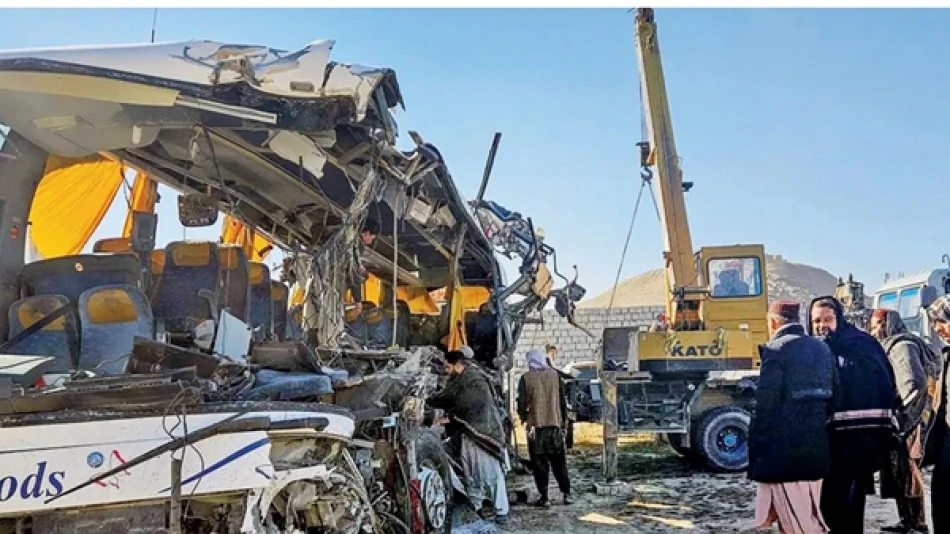
Deadly Bus Crash Claims 50 Lives in Western Afghanistan
Afghanistan's Deadly Roads Claim Over 50 Lives in Western Province Bus Crash
More than 50 people died Tuesday in a catastrophic collision between a passenger bus and truck in Afghanistan's western Herat province, highlighting the country's ongoing transportation safety crisis. Local police attributed the deadly accident to excessive speed and driver negligence, underscoring systemic infrastructure and regulatory challenges that have plagued the war-torn nation for decades.
The Crash: Speed and Negligence Turn Fatal
The passenger bus veered off the main highway before colliding with a truck in what police described as a "serious crash" caused by reckless driving. The incident occurred in Herat province, a key transit corridor connecting Afghanistan to Iran and serving as a vital economic lifeline for the landlocked country.
Local authorities confirmed that excessive speed and driver negligence were the primary factors behind the tragedy, reflecting broader issues with traffic enforcement and vehicle safety standards across Afghanistan.
Afghanistan's Transportation Safety Crisis
Decades of Infrastructure Neglect
This latest tragedy exposes Afghanistan's chronic transportation safety problems, rooted in decades of conflict, limited infrastructure investment, and weak regulatory oversight. The country's road network, while improved during the international presence from 2001-2021, remains inadequate for current traffic volumes and lacks proper maintenance.
Unlike neighboring countries such as Iran and Pakistan, which have implemented stricter vehicle inspection programs and driver licensing systems, Afghanistan's transportation sector operates with minimal oversight. The Taliban administration, focused on basic governance challenges, has yet to prioritize comprehensive traffic safety reforms.
Economic Pressures Drive Risk-Taking
Afghanistan's economic collapse following the Taliban's return to power has intensified pressure on commercial drivers to maximize trips and minimize travel time. With limited employment opportunities and families depending on transportation income, drivers often prioritize speed over safety—a calculation that proved deadly in Herat.
The country's isolation from international banking systems has also limited access to newer, safer vehicles, forcing operators to rely on aging fleets with inadequate safety features.
Regional Context and Comparisons
While road accidents plague many developing nations, Afghanistan's situation is particularly acute. India experiences similar high casualty rates but has implemented national road safety policies and emergency response systems that Afghanistan lacks. Even Pakistan, despite its own challenges, maintains better traffic enforcement and medical emergency infrastructure.
The Herat incident reflects broader patterns seen across conflict-affected regions where state capacity remains limited and economic desperation drives dangerous behavior.
Implications for Afghanistan's Future
This tragedy underscores the Taliban administration's governance challenges beyond security and international recognition. Establishing basic safety regulations, training programs for commercial drivers, and emergency response capabilities will be essential for preventing future mass casualty incidents.
For Afghanistan's isolated economy, improving transportation safety could become crucial for maintaining the limited trade relationships that sustain the country. International partners and neighboring nations may increasingly view Afghanistan's infrastructure reliability as a factor in economic engagement decisions.
The Herat crash serves as a stark reminder that Afghanistan's reconstruction needs extend far beyond political stability to encompass fundamental public safety systems that protect ordinary citizens navigating daily life in one of the world's most challenging environments.
 Layla Al Mansoori
Layla Al Mansoori







